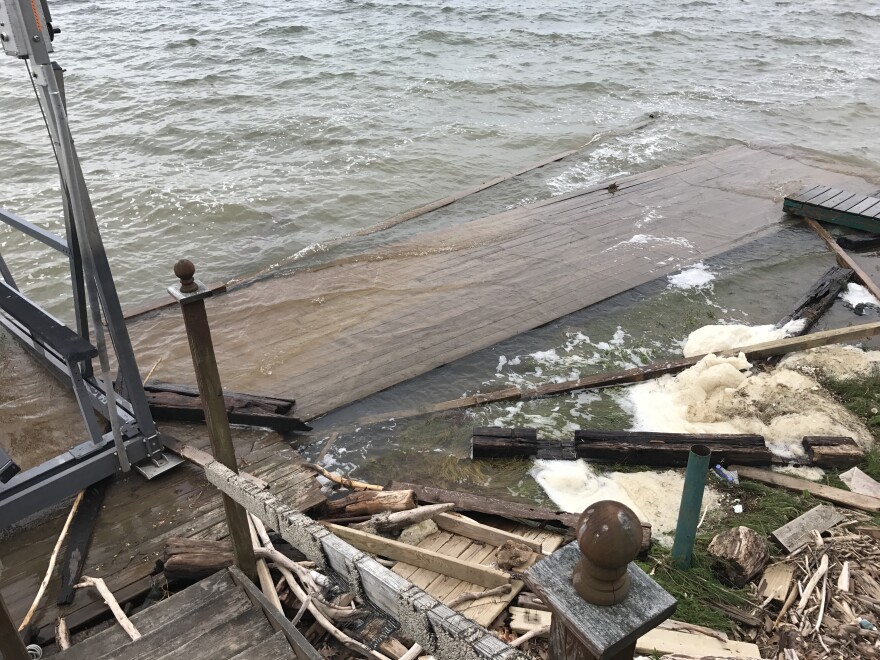Lake Ontario is hovering at its long-term average and two feet below where it was at this time last year, but it's not the same elsewhere in the Great Lakes. Some of the lakes are two or more feet above their long-term averages, presenting a risk of flooding in Lake Ontario next spring.
And with a La Nina weather pattern this winter that could lead to an increase in precipitation, the international body that helps regulate water levels on Lake Ontario and the St. Lawrence River has decided it needs to take precautionary measures. Starting next month, the Lake Ontario-St. Lawrence River Board will increase outflow levels from Lake Ontario.
"Analysis indicated that there’s a moderate risk of exceeding water levels on Lake Ontario in the spring that could cause damages associated with high water levels," said Bryce Carmichael, secretary to the Board. "As [the Board] considered that risk and what could potentially be done to lower that risk their hands were somewhat tied."
Carmichael is referencing Plan 2014, the water management plan that dictates how much water is released from the Lake into the St. Lawrence River. With Lake Ontario's current levels, the Board cannot increase those outflows, but the International Joint Commission has given the members the authority to deviate from those mandates for the months of January and February. It's a step shoreline residents and lawmakers have been asking board members to take for months given high water levels upstream. The Board resisted those calls, including most recently in October because Lake Ontario was at its long-term average and levels were continuing to drop.
Jeannine Rossignol, who lives on Sodus Bay, is a member of the Coalition to Protect Great Lakes Shorelines citizen advocacy group that has led the campaign to get the Board to deviate from Plan 2014. She celebrated the decision to deviate, saying the members have finally heard them.

"I mean it's huge for us," Rossignol said. "We have been trying to recover from the damage from 2017 and 2019 so to know that this will help alleviate the chances of flooding for 2021 means a great deal.
We’ve recognized what it means to keep the water as low as possible now so that come the spring rain and winter melt off, it doesn’t get to the flood level again."
Bernie Gigas, an engineer and Lake Ontario shoreline resident, agrees that this is a positive development but he said it's not the answer to avoiding flooding. Gigas said ultimately the water management plan needs to be addressed, not just sidestepped.
"Depending on what we get for weather next spring we will flood. This will not change that," Gigas said. "We will get a couple of inches from it, but we will not get two feet out of it; it’s just impossible, but it’s a sign in the right direction that maybe Plan 2014 and the way it’s implemented under these very high water inflow conditions can’t quite do it on its own."








